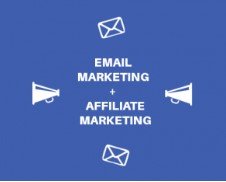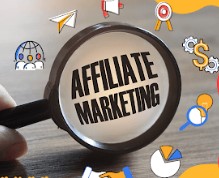Email marketing continues to be one of the most effective methods of communication for businesses looking to engage with customers, build relationships, and drive sales. With the right strategies, email marketing campaigns can yield high returns on investment. However, despite its potential, many businesses face various challenges when executing their email marketing campaigns. From low open rates to high unsubscribe rates, these challenges can often be frustrating for marketers who are seeking to maximize the impact of their emails.
In this article, we will explore common email marketing problems and provide actionable solutions to fix them, enabling you to improve the effectiveness of your campaigns.
1. Low Open Rates
One of the most common problems in email marketing is low open rates. This means that recipients are not even opening your emails, making it impossible for your message to reach them. Factors contributing to low open rates can include unappealing subject lines, irrelevant content, or emails being marked as spam.
How to Fix It:
Craft Compelling Subject Lines: The subject line is the first impression your email makes on the recipient. Make sure it is clear, concise, and engaging. Personalize the subject line by using the recipient’s name or other personalized elements, such as referencing past purchases or browsing behavior.
Test Your Subject Lines: Conduct A/B tests to determine which subject lines resonate best with your audience. Test different approaches—questions, urgency, humor, etc.—and optimize based on the results.
Optimize for Mobile Devices: Many users check emails on mobile devices. If your subject lines are cut off or look unprofessional on mobile screens, it can lead to lower open rates. Ensure that your subject lines are mobile-friendly by keeping them short and ensuring they render well on different devices.
Segment Your Audience: Sending generic emails to a broad audience can result in lower engagement. Segment your email list based on demographics, past behavior, or engagement levels, and tailor your subject lines and content to each segment’s preferences.
2. High Unsubscribe Rates
When people unsubscribe from your email list, it means they no longer find value in the content you are sending. High unsubscribe rates are often a sign that your emails are not resonating with your audience or that you’re bombarding them with too many emails.
How to Fix It:
Provide Value in Every Email: Ensure that every email you send delivers value to the recipient. Whether it’s through useful information, special offers, or exclusive content, make sure your emails are meaningful to the subscriber.
Optimize Email Frequency: Sending too many emails can overwhelm your audience and lead to unsubscribes. Find the right balance for your audience. Some customers may appreciate frequent updates, while others may prefer fewer emails. Use A/B testing to determine the ideal frequency.
Personalize Your Emails: Personalized emails are more likely to capture the recipient’s attention. Use the subscriber’s name, past purchase behavior, and preferences to tailor your messaging. This can help improve the relevance of your emails and reduce the likelihood of unsubscribes.
Make Unsubscribing Easy: This may sound counterintuitive, but making it easy for users to unsubscribe can actually reduce the frustration that might lead to more unsubscribes. A clear and easy-to-find unsubscribe link can help your audience feel in control and less likely to mark your emails as spam.
3. Emails Landing in Spam Folders
Emails that end up in the spam folder never even get a chance to be opened. If your emails are being marked as spam, it can significantly harm your sender reputation, ultimately resulting in poor deliverability.
How to Fix It:
Authenticate Your Emails: Use SPF (Sender Policy Framework), DKIM (DomainKeys Identified Mail), and DMARC (Domain-based Message Authentication, Reporting & Conformance) to authenticate your emails. These protocols help ensure that your emails are coming from a legitimate source and prevent them from being flagged as spam.
Avoid Spammy Words and Phrases: Certain words and phrases (such as “free,” “buy now,” or “limited offer”) are often associated with spam. Avoid using these words in your subject lines, preview text, and email body. Also, refrain from excessive punctuation and all-caps phrases that can make your emails appear spammy.
Keep Your List Clean: Regularly clean your email list to remove inactive or invalid email addresses. Continuing to send emails to non-existent or unengaged subscribers can lead to higher bounce rates, which could result in your emails being flagged as spam.
Monitor Your Sender Reputation: Use tools like Sender Score or Postmark to monitor your sender reputation. If your reputation drops, it can affect your ability to land in the inbox. Take immediate action to fix any issues if your emails are being marked as spam.
4. Low Click-Through Rates (CTR)
A low click-through rate indicates that while people may be opening your emails, they are not taking the next step—clicking on links or call-to-action (CTA) buttons. This can be frustrating if you’re trying to drive traffic to your website or encourage purchases.
How to Fix It:
Optimize Your CTAs: Make your CTAs clear, specific, and action-oriented. Use strong verbs that tell the reader exactly what to do, such as “Shop Now,” “Learn More,” or “Get Started.” The CTA should stand out visually, such as using contrasting colors or placing it above the fold.
Use Engaging Visuals: Visuals can help draw attention to your CTAs. Use compelling images, buttons, and banners that encourage clicks. However, be mindful of not overloading your emails with too many visuals, as this can slow down loading times and reduce engagement.
Segment Your Audience: A one-size-fits-all approach to email content may not drive clicks. Segment your audience based on factors like past behavior, demographics, and interests, and tailor your email content and CTAs to each segment.
Create Valuable Offers: Provide incentives that motivate recipients to click on your CTA. Discounts, exclusive access, or valuable content can make your offer more enticing and increase CTR.
5. Poor Deliverability
Even if your emails aren’t going to spam, they may still not be reaching your subscribers’ inboxes due to poor deliverability. This can result from a variety of issues, such as a low sender score, outdated email list, or problems with your email service provider.
How to Fix It:
Ensure a Clean Email List: Regularly clean your email list to remove unengaged subscribers, bounced emails, or invalid addresses. Segment your list to target only active subscribers who are likely to engage with your content.
Use a Reputable Email Service Provider (ESP): Choose an ESP with a strong track record of high deliverability. ESPs like Mailchimp, ConvertKit, and ActiveCampaign offer features that help monitor your deliverability and improve your chances of reaching the inbox.
Avoid Sudden Spikes in Sending Volume: Gradually increase the volume of your email sends if you’re starting to send larger campaigns. Sudden spikes in email sends can trigger spam filters, hurting your deliverability.
Authenticate Your Domain: As mentioned earlier, domain authentication (SPF, DKIM, and DMARC) plays a vital role in improving deliverability. It’s essential to authenticate your domain to show that you are a trusted sender.
6. Inadequate Analytics and Reporting
Without proper tracking and analytics, it’s challenging to measure the effectiveness of your email marketing campaigns. This makes it difficult to identify what’s working, what’s not, and how to optimize future campaigns.
How to Fix It:
Set Clear KPIs: Define clear key performance indicators (KPIs) that align with your campaign goals, such as open rates, click-through rates, conversions, or revenue generated. Having specific metrics helps you focus on what matters most.
Use A/B Testing: Regularly conduct A/B tests on various elements of your emails, including subject lines, CTAs, visuals, and email copy. This allows you to optimize your emails based on real-time data and insights.
Leverage Advanced Analytics Tools: Many email service providers offer advanced analytics features. Utilize these tools to gain deeper insights into your campaigns, track user behavior, and identify trends over time. This data will help you make data-driven decisions to improve your email strategy.
Monitor Bounce Rates and Unsubscribes: Bounce rates and unsubscribe rates can indicate problems with your email list quality or the relevance of your content. Pay attention to these metrics and take action if they are high.
While email marketing can present challenges, the good news is that most of these problems are solvable with the right strategies and tools. By addressing issues such as low open rates, high unsubscribe rates, and poor deliverability, you can optimize your email campaigns and see greater engagement and conversions. The key is to continuously test, optimize, and adapt based on the needs and preferences of your audience. With a focus on providing value, personalizing your messages, and using data to guide your decisions, you can overcome common email marketing problems and achieve long-term success.



